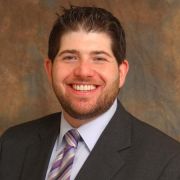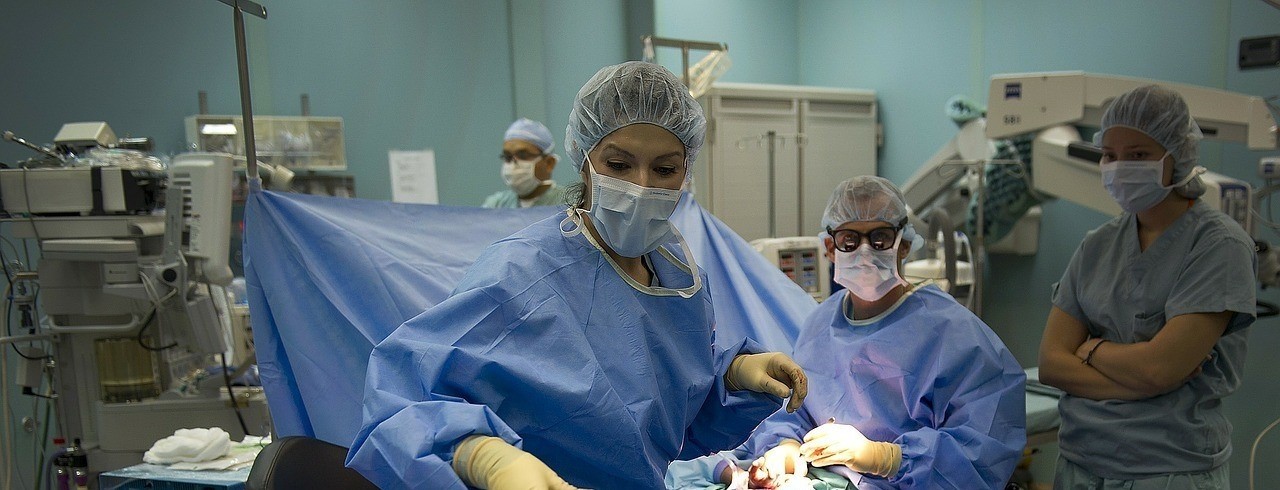This time last year I was sitting in a classroom at the school of education, learning about metacognition, reflection, and deep understanding. It had only been 18 short years since I graduated high school and I couldn’t help but wonder - How did I get here? I had finished my ear, nose, and throat (ENT) surgical training and quickly went from learning about resecting cancer and performing airway reconstruction to learning about teaching for understanding.
Over the previous 6 months I went from reading books from ENT legendaries like Dr. Charles Cummings and Dr. Jonas Johnson, to readings by education legendaries Edward Thorndike, Jean Piaget, Howard Gardner, and Carol Dweck. I asked myself, what am I doing here and why do I keep pursuing more graduate education?
I realized that I was in this classroom to learn about learning and somehow parlay it into improving my own teaching, and hopefully, that of those around me. I felt somewhat disenfranchised with the state of surgical education today. Advances in the cognitive theory of learning were spreading like wildfire through K-12 and secondary education that, traditionally, have been missing in medical training. As I sat there, I contemplated ways to adapt the lessons learned and bring cognitive theory to surgical education.
I preface this all with the fact that many of my instructors along my educational journey are excellent teachers, as are many people reading this post. I also realize that everyone is a teacher and a learner everyday in their lives; whether to patients, friends, relatives, or peers, everyone teaches someone something sometime. My goal with this post is to deconstruct our own teaching experiences and to connect them to underlying cognitive learning principles, so that we may adapt and magnify them to make ourselves more efficient and efficacious educators.
Novice-Expert Shift, Zone of Proximal Development (ZPD), and Desirable Difficulty
Theory: The novice-expert shift is the journey our trainees take as they go from not knowing what they don’t know (true novice) to becoming experts in their field. During this journey, they follow a path that is domain-specific and different for every student. For example, they may develop laparoscopic skills much more swiftly than soft tissue skills, or vice versa. The importance of this in surgical education is that no student’s growth in every domain will follow a straight line corresponding to his or her year in training. [See Pusic et al. for more on learning curves in health professions education]. This is the principle behind competencies and milestones rapidly making their way into medical education. Despite the recent implementation of these principles, I still hear attending surgeons say, “I never let a third year resident insert a cochlear implant or let 2nd year residents do X”. I still see colleagues lecturing students with the same talk they gave at conferences in years past without ascertaining where their level of understanding of their audience or leveraging their base knowledge on the subject.
The Zone of Proximal Development (ZPD) essentially lies on either side of the student growth curve and delineates the boundaries of tasks that will result in positive student learning [See Vygotsky (1978) for more on ZPD or DiSessa (2000) on Regime of Competence]. Tasks too far below this zone are too simple and will not result in moving students much along their growth curve. Too far above and the task is too difficult to complete, leading to learner frustration and stagnation. The sweet spot, or what I call the Goldilocks zone, is where the student will be maximally challenged and advance furthest along their learning continuum. If you target the zone above the curve, for both cognitive and practical skills, you will maximize their growth.
Application to Practice: In my teaching, I try to remain agnostic to residents’ training year and gauge their skill in each domain based on their own insight into their abilities, and what they demonstrate in the operating room. Intuitively, we all probably give trainees graduated responsibilities that will stretch their capabilities. I try to take this further and ask every individual trainee, before a case, where they are along their continuum of learning for that particular case and where they want to be after. This requires the instructor to meet with the resident before the case or before the day starts to assess their base knowledge or skill. Often, due to time constraints, this isn’t practical but, again, if we want to be the most efficient at teaching our residents we need to keep these concepts in mind. During the case I give them more and more difficult tasks in a sort of game to figure out where the limit of their zone is and we stay right at that level until the case is over. I then ask them three simple questions after each case: “What could I have done better as an instructor? What are areas you would like to improve on as a surgeon? What could have everyone done better as a team?” I try to engage the OR staff and anesthesiology team in the last question as often our cases employ the shared airway principle between our two teams. This reflection and metacognition on our experience is another principle that we will cover another time, but is vital to their learning. Here is where, as the expert, we can assess their insight and get a gauge of their progression on their learning continuum.
Implicit knowledge to Explicit knowledge, Context, and Schema Formation
Theory: When I get a first-year medical student in my clinic in OR, it is extremely difficult, dare I say impossible, to imagine what it was like to be at that level. One major barrier is that as an expert, you have highly refined and streamlined information storage in your head, and have automatized many cognitive tasks. This organizational strategy or ‘schema’ is very individualized and content-specific. In deciding which bookshelf to store information in your head, you have made it the most efficient for retrieval when needed and attached to other similar nuggets of information. Along with this, as an expert, you have cleared space on the shelves by pushing out elements of information that are no longer needed because they are implicit. You no longer need to remember that the right pedal makes the car go forward and the left one makes the car slow down. These assumptions and automations you have introduced into practice are very difficult to unpack for the novice learner. Imagine explaining how to drive to the grocery store to someone who has never driven a car before. As a teacher it is very difficult to unpack every little important detail needed and make them explicit for the learner. Master teachers are able to take their schema for a particular topic, fully deconstruct it into its component parts and transfer that knowledge in a sensible fashion to their students.
Application to Practice: I try to imagine myself trying to learn something for the first time. Last year I learned the basics of how to write code for websites. I realized that a major barrier to learning anything was that you had to get the basic words that people use and understand the context in which they are used. I had to start out by understanding what ‘h1’ meant and why it mattered. James Paul Gee in his book What Video Games Have to Teach Us About Learning and Literacy discusses ‘situated cognition’ and ‘situated meaning.’ He explains that words are context- and domain specific and uses the term ‘work’ as an example. This word means something totally different to human resources versus a physics professor. We must think about the efficacy of the message if the true novice doesn’t know the words or context, especially in the context of surgery, the operating room, or even medicine. This is the same principle we must remember when explaining surgery to our patients or families.
As I go through the surgery I try to unpack things in my own head before describing it piecemeal to the trainee. I encourage the resident to call me out when I skip over something or they feel I made an assumption. Residents often feel apprehensive to point out weak knowledge areas so it is essential I set up a safe learning environment. This is also exemplified during our post procedure feedback session where we undergo a frank discussion of what went well, what needs work and how to proceed.
Cognitive Load and Chunking
Theory: Cognitive load is familiar to most. It is essentially the mental capacity of someone to absorb information in a given learning experience. This is traditionally split into intrinsic, extrinsic, and germane load. These loosely can be seen as the complexity of the learning content itself, the complexity of how the content is delivered, and the mental energy needed to internalize the information. Chunking is one technique to lower the intrinsic cognitive load by only including smaller, digestible pieces of information. The cognitive load of any learning experience, cognitive or procedural, can be managed this way.
Application to Practice: My attending in fellowship, David Roberson, had a great way to put this into practice. When he taught tonsillectomy, he would do the first 90% of the surgery and then allow the trainee to finish the surgery. The next time he would do 60% and so on until the resident was doing the whole case. Without him knowing, he was chunking the information and managing the cognitive load so residents could focus on the task at hand. It was also backwards design in some sense as the resident saw what the finished product looked like and could just focus on getting to the next point in the case. They also focused on the easiest part of the case first and repeated completing the case a multitude of times instead of messing with putting the mouth gag in, initially grasping the tonsil, and finding the capsule (often the harder parts of the procedure). When I start cases with residents I think about what they want to focus on so I can manage the cognitive load and move them along their learning curve and not dwell on things they have already mastered.
Conclusion
Over the last year and a half I have come to realize that the cognitive psychology of learning is not as scary as I had originally thought. It underpins what many of us know as good teaching strategies. I realize for many of us bringing theory to practice can seem overwhelming. I found that starting with just one strategy, i.e. managing my own cognitive load, made a huge impact on my teaching. Over time I have instituted many other cognitive principles and continue to look for ways to incorporate them into my every day teaching of students, residents, and fellows. Which of these principles do you intend to include in your practice? Comment on the blog to share specific strategies with our community!
Eric Gantwerker

Eric Gantwerker MD, MS, MMSc (MedEd) (Educators ’15, Leaders ’15) is a graduate of the MMSc in Medical Education Program at Harvard Medical School. His expertise is in educational technology, faculty development, motivational theory, and the cognitive psychology of learning. He is currently working clinically in New York as a pediatric otolaryngologist as well as serving as the Vice President, Medical Director of a technology company called Level Ex.
You can follow Dr. Gantwerker on Twitter @DrEricGant.

